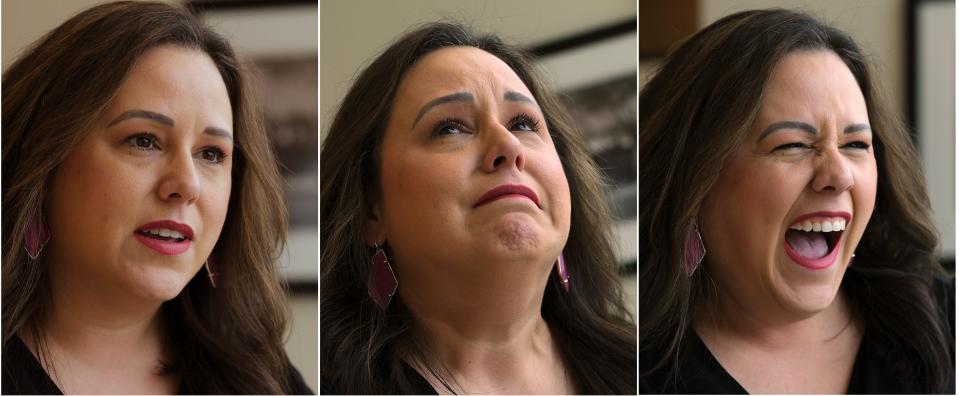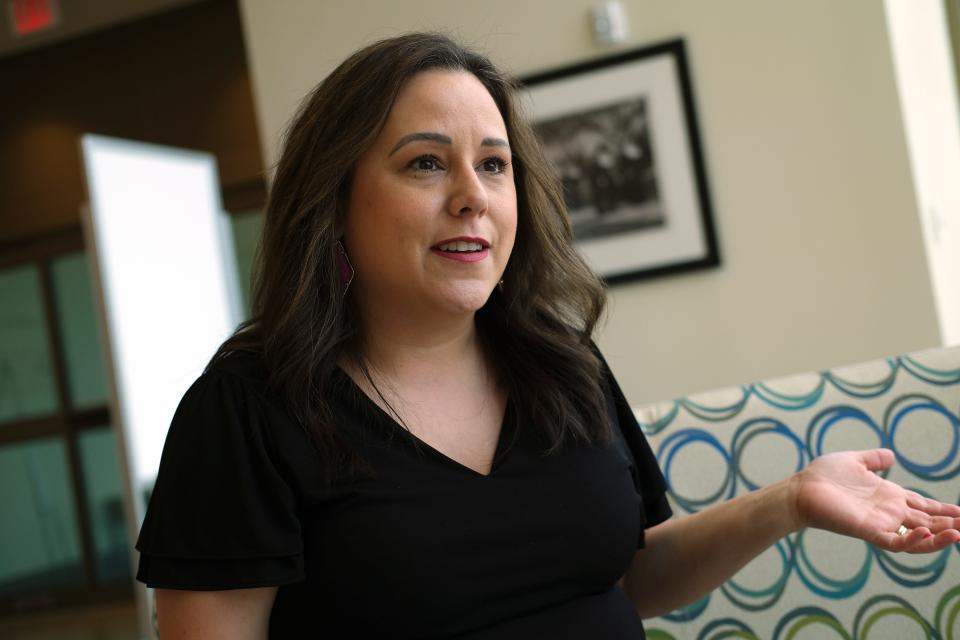Cancer patients in rural Oklahoma are more likely to die, partially due to travel barriers
Stephanie Krenn teared up in the lobby of the Mercy Coletta Cancer Center as she reflected on the amount of money she has spent on treatment over the past eight years — money she and her husband were hoping to save to send her son to college.
Krenn, who lives in Ponca City, was diagnosed with stage 3 breast cancer when she was 31 years old. She had felt the lump in her breast and immediately called her OB-GYN at Mercy Hospital in Oklahoma City.
“It was just sort of a whirlwind,” Krenn said. “Those first few months of scans, appointments and labs … it’s exhausting but this was all I knew.”
Chemotherapy, surgeries and immunotherapy dominated Krenn’s life for the first 18 months of her battle with cancer, meaning she made the three-and-a-half-hour round trip from Ponca City to the metro once or twice a week.

How rural Oklahomans are getting health care
Krenn is not alone.
Statistics from the OU Stephenson Cancer Center, Oklahoma’s largest cancer center and the state’s only National Cancer Insitute-Designated Cancer Center, show that more than 35% of new patients seen at Stephenson reside in a federally designated rural area. Additionally, about 40% of the patients who receive recurring care reside 50 miles or more from Stephenson’s main Oklahoma City site.
Mark Doescher, a family medicine doctor at OU Health, said travel barriers can cause some patients from rural areas to refuse care. Some elderly individuals cannot travel long distances for cancer treatment, which can cause potential delays in care, he said. Additionally, people have to arrange time off work or find a loved one to drive them if they cannot drive themselves.
Studies from the Centers for Disease Control and Prevention show rural areas have higher cancer mortality rates than urban areas, which can be attributed in part to delays in diagnosis.
More: Some say depression, anxiety contribute to cancer risk. A new study dispels that myth.

"As you look to the more remote rural areas, you see that that unknown stage and late stage diagnosis goes up," Doescher said. "That just speaks to the issue of access to folks in rural areas."
According to OU Health’s Cancer in Oklahoma Data Brief Series, there were over 8 million cancer cases diagnosed between 2014 and 2018 in the United States and 101,791 in Oklahoma. During this time frame, there were 2,984,000 cancer deaths in the United States and 40,956 deaths in Oklahoma.
Additionally, during that time frame, there were 71,370 cancer cases and 24,432 cancer deaths in urban Oklahoma and 40,931 cancer cases and 16,484 cancer deaths in rural Oklahoma.
Doescher said a lot of the cancers in rural areas are detectable with screening, but there are low rates of screening in rural areas.
According to the data brief, rural women in Oklahoma are less likely to be up-to-date with breast cancer screening compared to urban women in Oklahoma.
OU Health has statewide mobile mammography units that travel outside of the Oklahoma City metro that offer breast health care and screening mammograms.
For prostate cancer, rural men in Oklahoma are less likely to be up-to-date than rural and urban men in the United States, but more likely to be up-to-date on prostate cancer screening than urban men in Oklahoma.
More: Skin cancer not 'relatively new,' dates back more than 200 years | Fact check
Rural Oklahoma patients finding support
Julie Linse dedicated the last few years of her life to helping cancer patients in rural Oklahoma. She died in 2015 after being diagnosed with pancreatic cancer in 2009. When she was alive, newly diagnosed pancreatic cancer patients would often call her for support and advice.
Many of the patients Julie spoke with were from rural Oklahoma, her husband Mike Linse said. The pair, who lived in Oklahoma City, led a support group for pancreatic cancer survivors, and many of the people Julie spoke with on the phone were too far from the metro to attend the sessions, so they relied on Julie for support.
“If they had a question about how they were feeling or what to expect and stuff, she would share that information with them,” Mike said.
Mike told a story about a Vietnamese man who attended the support group in 2011. He spoke little English, according to Mike, so Julie began attending doctor’s appointments with him to ask all the questions she knew he’d need the answers to.
The man was eventually sent to Houston, Texas, for further treatment after he ran out of options in Oklahoma City, so Julie drove him there and picked him back up two months later. The man died from the cancer soon after.
“(Julie) never met a stranger,” Mike said. “She could make friends with anybody, and she did.”
Mike continues to lead the support group despite the fact that his wife died seven years ago.
“People need the help. If I wasn't doing a pancreatic cancer support group here in Oklahoma City, there wouldn't be one,” Mike said.
The support group raises money for people traveling for cancer treatment, Mike said, which is spent on hotel rooms, food and other expenses.
Additionally, for people in rural areas needing a place to stay during their cancer treatment in the metro, the American Cancer Center Hope Lodge provides free housing so people with cancer can focus on getting better.
Hope Lodge communities across the country provide a free place to stay during treatment so people with cancer can focus on getting better. The homes include suites with private baths, a communal kitchen, a dining area, laundry rooms and places to gather or find a quiet respite.
Care inspires support group participation
For Krenn, she attempted to minimize some of the traveling time from Ponca City to Oklahoma City by cramming multiple appointments in one day, leaving her exhausted by the end of it while still having to brace for the two-hour drive home.
The constant traveling and treatment required Krenn to take time off from work and miss critical time with her son, who was 8 years old when she was diagnosed — but with stage 3 cancer, she couldn’t afford to take any breaks.
“You just don't have the energy,” Krenn said. “I mean, between chemo and treatments and traveling, it really takes a toll above and beyond what treatment would be.”
While Krenn was able to drive herself, her cancer treatment required her husband to pick up the slack in child care.
“As a mom, there are things that I should have taken care of, or I should have been there for, and I couldn't because a four-hour round trip cuts into all of those things,” Krenn said.
Krenn eventually received radiation in Ponca City, meaning she’d only miss 30 minutes of work compared with an entire day in Oklahoma City, so she saw the benefits of having treatment in close proximity to her home. That’s when she developed a passion for connecting with other cancer patients and survivors.
Krenn joined Project 31, a breast cancer community composed of survivors who help other survivors throughout their cancer journey.
Krenn leads an online support group and said she’s talked to many survivors from rural areas, and the distance decided whether they could do the full chemo therapy or all of the radiation.
She said the group's mission statement is to restore lives and families through breast cancer and connect survivors.
“It has definitely made my heart expand for that and made that more of a calling and the conversation that I want to have about those things,” Krenn said.
Krenn said her advice for people battling cancer is to connect with people at their cancer center, and to not be afraid to ask for help.
“Don’t think that you're in it alone, because you're not,” Krenn said. “That's one of the hardest things, I think, about being a rural patient, is that it's very isolating. Don't let that isolate you further.”
This article originally appeared on Oklahoman: Cancer patients in rural Oklahoma lack resources, services

